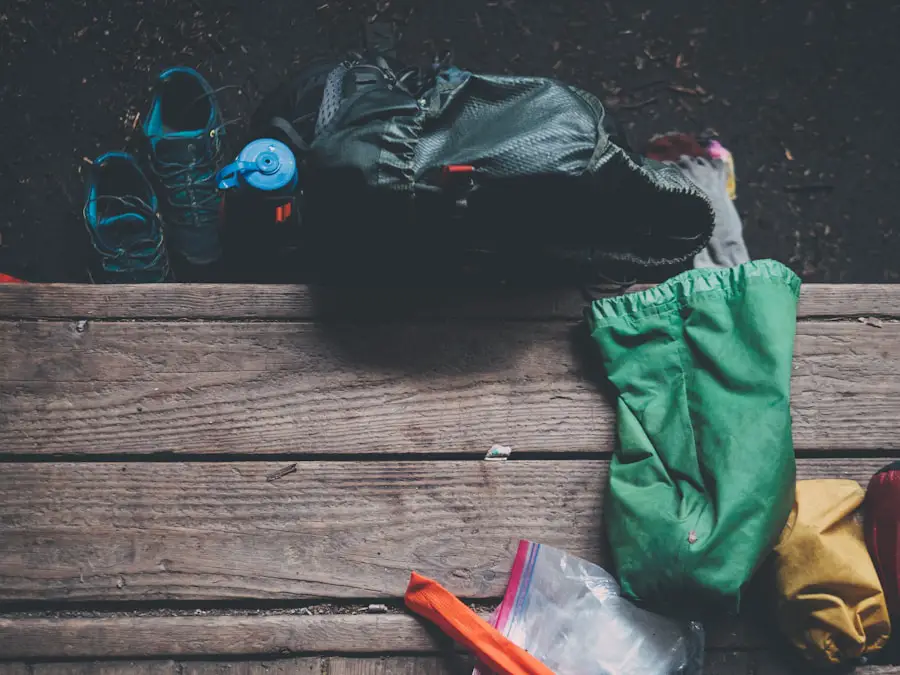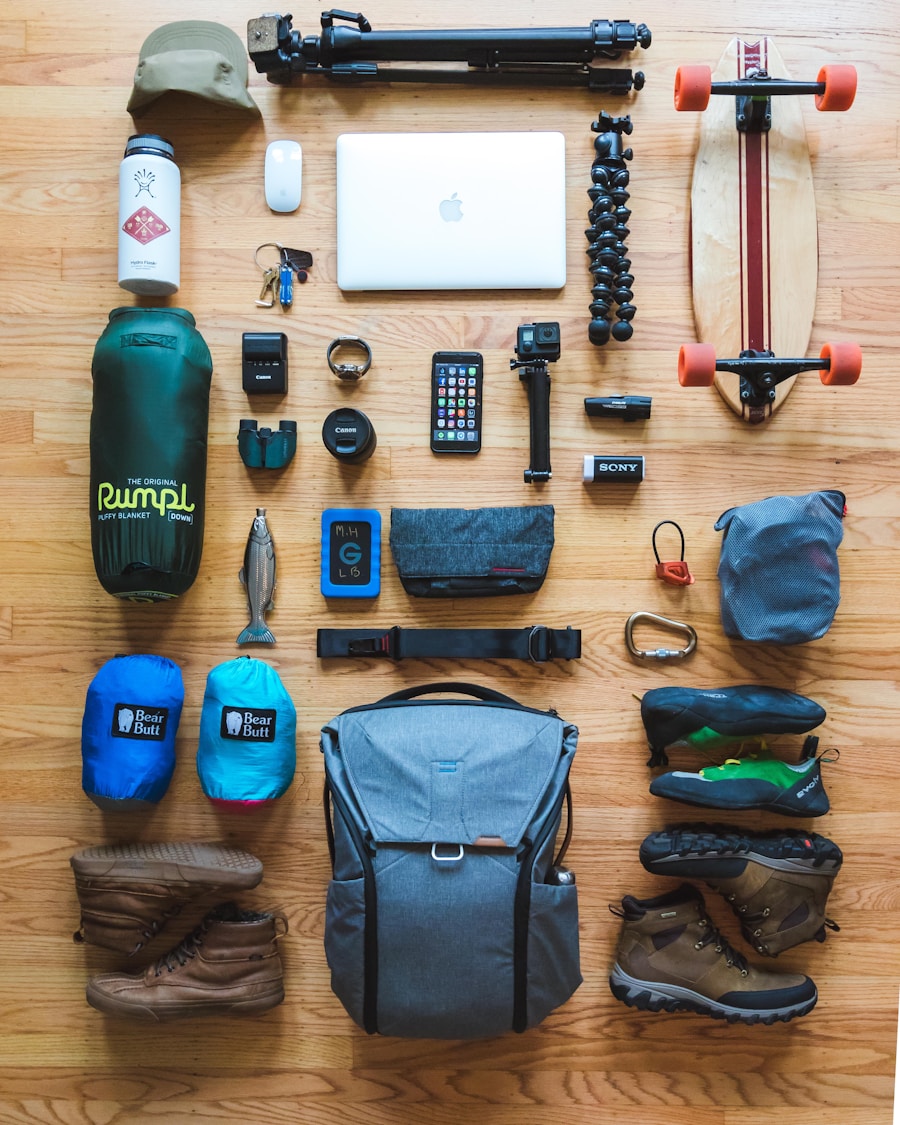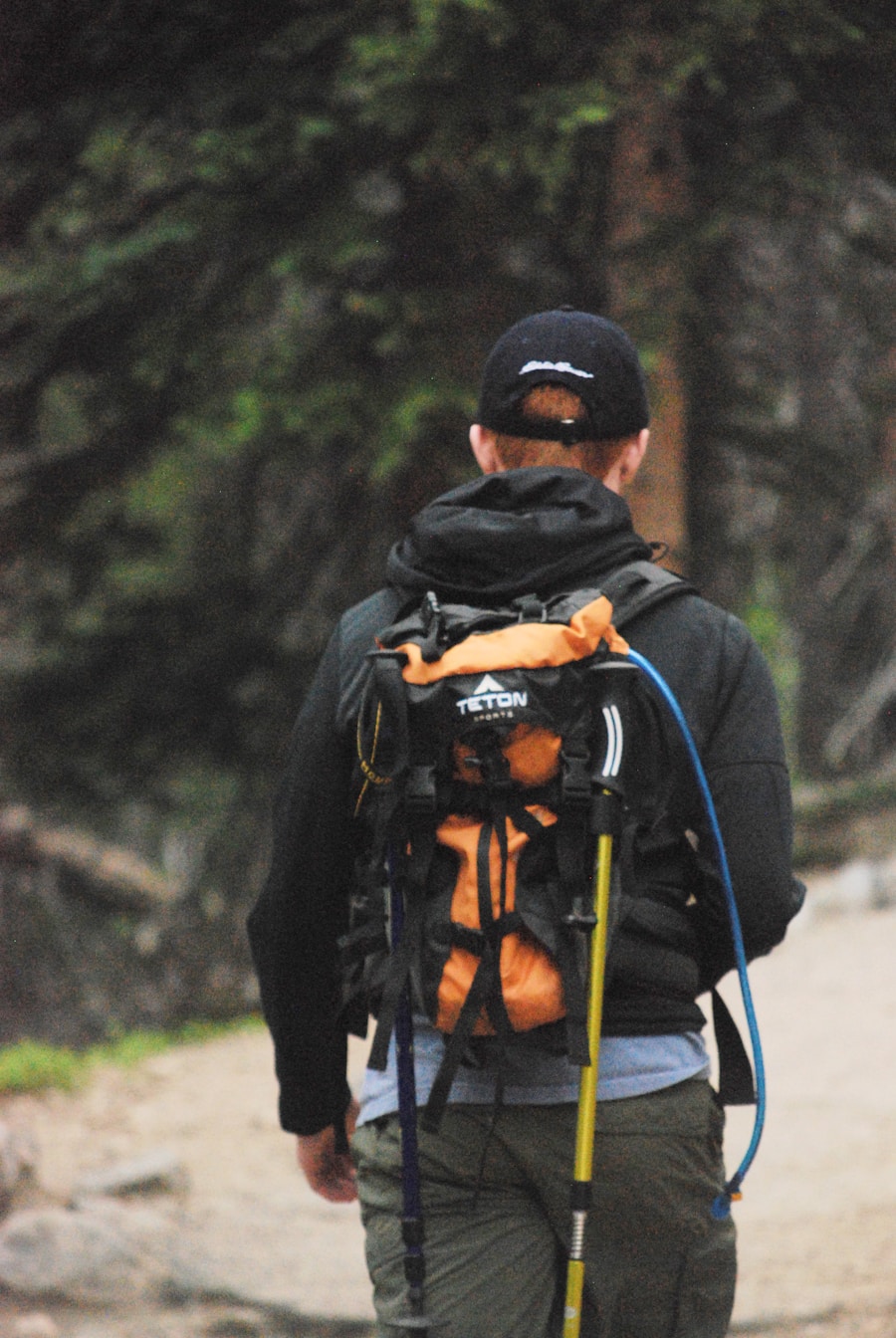In the wilderness, navigation tools are essential for ensuring that adventurers can find their way through unfamiliar terrain. Traditional maps and compasses have been the backbone of navigation for centuries, providing a reliable means of orienting oneself in the great outdoors. A topographic map, for instance, offers detailed information about the landscape, including elevation changes, water sources, and trails.
When used in conjunction with a compass, these tools allow hikers and explorers to pinpoint their location and chart a course to their destination. Understanding how to read a map and use a compass effectively is a skill that can be honed through practice, and it is invaluable for anyone venturing into remote areas. In addition to traditional navigation tools, modern technology has introduced GPS devices and smartphone applications that can significantly enhance navigation capabilities.
GPS devices provide real-time location tracking and can store multiple waypoints, making it easier to navigate complex routes. However, reliance on electronic devices can be risky; battery life can be limited, and signals may be weak or nonexistent in dense forests or mountainous regions. Therefore, it is prudent to carry both traditional and modern navigation tools.
This dual approach ensures that adventurers are prepared for any situation, whether they are relying on a smartphone app or reverting to the classic map and compass method.
Key Takeaways
- Always carry a map, compass, and GPS device for navigation in the wilderness
- Pack enough water and high-energy snacks for the duration of your trip
- Bring a lightweight, waterproof shelter and clothing for protection against the elements
- Have a well-stocked first aid kit with essentials like bandages, pain relievers, and antiseptic wipes
- Carry fire starter tools and a multi-tool for various tasks, along with extra clothing and sturdy footwear
Hydration and Nutrition
Staying hydrated is one of the most critical aspects of outdoor survival. Water is essential for maintaining bodily functions, regulating temperature, and preventing fatigue. In many wilderness areas, natural water sources such as rivers, streams, and lakes can be found, but it is crucial to ensure that this water is safe to drink.
Carrying a portable water filter or purification tablets can provide peace of mind when sourcing water from the wild. Additionally, adventurers should aim to carry enough water for their journey, especially in hot climates where dehydration can occur rapidly. A hydration bladder or water bottles with built-in filters can make it easier to stay hydrated while on the move.
Nutrition is equally important when spending extended periods outdoors. The body requires energy to perform physical activities, and having the right food supplies can make a significant difference in endurance and overall well-being. Lightweight, high-calorie foods such as nuts, energy bars, dried fruits, and jerky are excellent choices for outdoor excursions.
These foods are not only easy to pack but also provide the necessary nutrients to sustain energy levels during strenuous activities. Planning meals ahead of time and considering the caloric needs based on the intensity of the hike or expedition can help ensure that adventurers remain fueled throughout their journey.
Shelter and Weather Protection

When venturing into the wilderness, having adequate shelter is paramount for protection against the elements. A well-constructed shelter can provide safety from rain, wind, snow, and extreme temperatures. Depending on the environment and duration of the trip, options range from lightweight tents to more robust structures like tarps or hammocks with rain flies.
Tents are particularly popular among campers due to their ease of setup and ability to provide a comfortable sleeping environment. It is essential to choose a tent that is appropriate for the season and weather conditions; three-season tents are versatile for most conditions, while four-season tents are designed for harsher climates. Weather protection extends beyond just having a shelter; it also involves wearing appropriate clothing and gear.
Layering is a key strategy in outdoor clothing, allowing individuals to adjust their insulation based on changing temperatures and activity levels. Base layers wick moisture away from the skin, insulating layers trap heat, and outer layers protect against wind and rain. Investing in high-quality waterproof jackets and breathable fabrics can make a significant difference in comfort during inclement weather.
Additionally, understanding how to set up a shelter in various conditions—such as on rocky terrain or in windy areas—can enhance safety and comfort during outdoor adventures.
First Aid Kit
| First Aid Kit | Statistics |
|---|---|
| Number of households with a first aid kit | 85% |
| Percentage of workplace injuries treated with a first aid kit | 30% |
| Number of first aid kits sold annually | 5 million |
| Percentage of people who have used a first aid kit in the past year | 60% |
A well-stocked first aid kit is an indispensable component of any outdoor adventure. Accidents can happen at any time, whether it’s a minor scrape or a more serious injury like a sprained ankle or allergic reaction. A comprehensive first aid kit should include adhesive bandages in various sizes, antiseptic wipes, gauze pads, adhesive tape, scissors, tweezers, and pain relievers such as ibuprofen or acetaminophen.
Additionally, including items like blister treatment pads and an emergency blanket can address common issues faced by hikers and campers. Beyond basic supplies, it is crucial to have knowledge of first aid procedures. Familiarity with how to treat common injuries—such as how to clean a wound properly or how to stabilize a sprain—can be lifesaving in remote areas where professional medical help may be far away.
Taking a first aid course before embarking on outdoor adventures can equip individuals with the skills needed to respond effectively in emergencies. Furthermore, customizing the first aid kit based on specific needs—such as including allergy medications for those with known allergies—can enhance preparedness for any situation that may arise.
Fire Starter and Tools
Fire is one of humanity’s oldest tools for survival, providing warmth, light, and a means to cook food. Carrying reliable fire-starting tools is essential for any outdoor excursion. Traditional methods such as matches or lighters are effective but should be complemented by backup options like fire starters made from magnesium or flint.
These alternatives can ignite tinder even in damp conditions, ensuring that adventurers can create a fire when needed most. In addition to fire-starting tools, having the right materials for building a fire is equally important. Dry tinder—such as dry leaves, grass, or commercial fire starter sticks—can help ignite larger kindling like small twigs or branches.
Understanding how to build different types of fires—such as the teepee or log cabin methods—can enhance efficiency in cooking meals or staying warm during cold nights. Moreover, practicing fire safety is crucial; knowing how to extinguish a fire properly and adhering to local regulations regarding campfires can prevent wildfires and protect natural habitats.
Extra Clothing and Footwear

The right clothing and footwear can significantly impact comfort and safety during outdoor activities. Weather conditions can change rapidly in nature; therefore, packing extra clothing is essential for adapting to these fluctuations. A spare set of base layers can provide warmth if clothes become wet from sweat or rain.
Additionally, packing an extra pair of socks can help prevent blisters and keep feet dry during long hikes. Footwear is another critical consideration when preparing for outdoor adventures. Sturdy hiking boots with good ankle support are vital for navigating uneven terrain while providing protection against rocks and roots.
It’s advisable to break in new boots before embarking on long hikes to avoid discomfort or injury. In addition to hiking boots, packing camp shoes—such as lightweight sandals—can offer relief after a long day on the trail. Ensuring that footwear fits well and provides adequate support can make all the difference in maintaining energy levels throughout an adventure.
Personal Safety Items
Personal safety items are crucial for ensuring that adventurers can protect themselves from potential threats while exploring the outdoors. A whistle is an essential tool that can be used to signal for help if someone becomes lost or injured; its sound carries much farther than a human voice. Additionally, carrying a multi-tool or knife can serve multiple purposes—from preparing food to making repairs—and can be invaluable in emergency situations.
Another important aspect of personal safety is situational awareness. Carrying items such as bear spray in areas where wildlife encounters are possible can provide an added layer of security against animal attacks. Learning about local wildlife behavior and understanding how to react during encounters can further enhance safety while exploring nature.
Moreover, having a personal locator beacon (PLB) or satellite messenger device can facilitate communication with emergency services if needed; these devices send distress signals even when cell service is unavailable.
Emergency Communication Devices
In today’s interconnected world, emergency communication devices play a vital role in outdoor safety. While traditional cell phones are commonly used for communication, they often rely on cellular networks that may not be available in remote areas. Satellite phones offer an alternative by providing coverage almost anywhere on Earth; however, they tend to be more expensive and bulkier than standard mobile phones.
Another increasingly popular option is the use of two-way radios or walkie-talkies for group communication during outdoor activities. These devices allow users to maintain contact over short distances without relying on cellular networks. For those venturing into particularly isolated regions, investing in a personal locator beacon (PLB) or satellite messenger device can be life-saving; these devices allow users to send distress signals with their location coordinates directly to emergency services when needed.
Understanding how these devices work and ensuring they are fully charged before heading out is crucial for effective communication during emergencies. Regularly checking battery life and carrying extra batteries or solar chargers can help ensure that communication devices remain operational throughout an adventure. By incorporating these tools into their gear list, adventurers can enhance their safety while exploring the great outdoors.
When preparing for a hiking trip, it’s important to pack the right gear to ensure a safe and enjoyable experience. One helpful article to check out is “Deer Travel: How Far in a Day?” This article provides valuable insights on how far deer can travel in a day, which can be useful information for hikers looking to plan their routes and estimate their hiking distances. By understanding the habits of deer and their travel patterns, hikers can better prepare for their own journeys in the great outdoors.
FAQs
What are the essential items to pack in a hiking backpack?
Some essential items to pack in a hiking backpack include water, food, a map and compass, a first aid kit, a multi-tool or knife, a headlamp or flashlight, extra clothing layers, a waterproof jacket, sunscreen, and a whistle.
How much water should I pack for a hiking trip?
It is recommended to pack at least 2 liters of water per person for a day hike. In hot or strenuous conditions, you may need to pack more.
What type of food is best to pack for a hiking trip?
Lightweight, high-energy snacks such as trail mix, energy bars, and dried fruits are good options for hiking. It’s also important to pack a meal or two, such as sandwiches or wraps, that are easy to eat on the trail.
What should I consider when packing clothing for a hiking trip?
When packing clothing for a hiking trip, consider the weather conditions, the length of the hike, and the terrain. It’s important to pack moisture-wicking and quick-drying clothing, as well as extra layers for warmth.
Why is it important to pack a map and compass for a hiking trip?
A map and compass are important for navigation in case you get lost or lose your way on the trail. It’s important to know how to use them before heading out on a hike.
What should I include in a first aid kit for a hiking trip?
A basic first aid kit for a hiking trip should include adhesive bandages, gauze pads, adhesive tape, antiseptic wipes, blister treatment, pain relievers, and any personal medications. It’s important to customize the kit based on your specific needs and any potential risks on the trail.
Why is it important to pack a multi-tool or knife for a hiking trip?
A multi-tool or knife can be useful for a variety of tasks on the trail, such as cutting bandages, repairing gear, or preparing food. It’s important to use it responsibly and safely.
What type of flashlight is best for a hiking trip?
A headlamp or a small, lightweight flashlight with extra batteries is best for a hiking trip. It’s important to have a reliable light source for navigating in low-light conditions or emergencies.
Why is it important to pack sunscreen for a hiking trip?
Sunscreen is important for protecting your skin from harmful UV rays, especially at higher elevations where the sun’s rays can be stronger. It’s important to reapply sunscreen throughout the day, especially if you’re sweating or swimming.
Why should I pack a whistle for a hiking trip?
A whistle is an important signaling device in case of an emergency. It can be used to alert others of your location if you get lost or need assistance on the trail.
